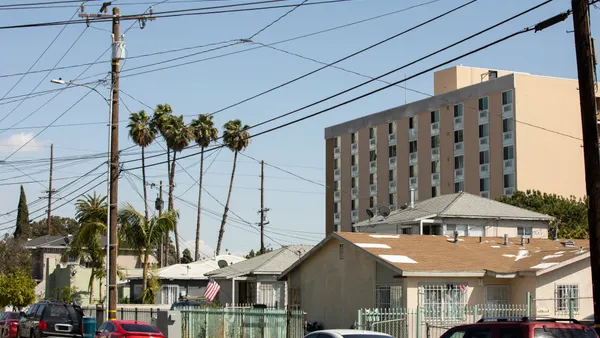Across the country, public school energy and facility leaders are being asked to do more with even less. Aging buildings, shifting political priorities, and shrinking budgets are making it harder to plan and invest wisely in facility improvement projects.
The traditional approach to capital planning, once guided by predictable funding and long-term timelines, no longer fits today’s reality. Instead, district leaders must adopt flexible, data-driven facility planning strategies that prioritize operational efficiency, reduce risk, and make every dollar count.
Eliminating cost volatility through Capital Asset Planning
In many districts, capital planning is reactive. Maintenance is deferred until systems fail, leading to emergency repairs that disrupt operations and drive up costs. This cycle is not only expensive—it’s unsustainable. And with most school buildings well past their prime, districts are increasingly vulnerable to financial risk.
The American Society of Civil Engineers (ASCE) highlights this issue in its 2025 Infrastructure Report Card, urging districts to adopt life-cycle cost analysis to evaluate the full cost of projects—including operations and maintenance (O&M)—and achieve the lowest long-term cost.
Capital Asset Planning (CAP) is one proactive solution to this problem:
- Strategic Roadmap: Software provides detailed asset data and lifecycle forecasts, helping leaders plan ahead, allocate resources wisely, and avoid costly surprises.
- Risk Reduction: By identifying vulnerabilities early, CAP enables districts to take preventive action before issues escalate into emergencies.
Implementing CAP begins with a comprehensive inventory of district assets. This includes onsite audits and data collection for major systems such as HVAC, kitchen equipment, IT infrastructure, and mechanical operations. Key data points—like square footage, equipment type, maintenance history, and replacement costs—are also captured and analyzed to inform smarter decision-making.
With this foundation, facility leaders can shift from reactive fixes to strategic investments, reducing risk and improving operational continuity.
Creating a strategic capital improvement roadmap
Capital improvement planning is less sustainable when it’s structured around solving only the most urgent, short-term facility needs. Alternatively, a well-crafted capital improvement roadmap should prioritize short-term wins that solve urgent problems and financially pave the way for long-term, wish list improvements.
Prioritize projects that safeguard operational continuity. Focus on investments like these that protect your district’s ability to operate smoothly and meet future demands:
- Modernize learning environments to attract and retain students
- Address deferred maintenance to prevent costly disruptions
- Align budget and staffing resources to better support core district priorities
These projects help ensure your schools remain safe, functional, and competitive.
Prioritize projects that reduce Operations and Maintenance (O&M) costs. O&M is a major expense—but one that can be reduced through smart upgrades. Consider projects that:
- Install LED lighting to lower energy use and maintenance costs
- Implement smart building controls for better efficiency and oversight
- Upgrade plumbing and HVAC systems to conserve water and reduce utility bills
- Adopt clean energy technologies to stabilize long-term energy costs and improve resilience to severe weather events
Savings from these improvements can be reinvested into academic programs, staffing, and student services.
Explore innovative funding options and project delivery models. High upfront costs often stall progress, but alternative financing can help districts move forward:
- Use Energy Savings Performance Contracts (ESPCs) to fund upgrades by capturing and reinvesting energy savings
- Leverage (and stack!) grants, rebates, and public-private partnerships to supplement limited budgets
- Bundle projects to maximize impact and streamline procurement
Creative funding strategies can unlock critical improvements without straining district finances.
Minimize risk and avoid cost volatility through smart facility planning
Anchoring capital planning with the best available software, data, and a roadmap suited to your district’s unique needs will help facility leaders more effectively reduce risk, control costs, and better serve their students.
A partner like Schneider Electric can help districts transform aging infrastructure into a foundation for future success. To learn more, download our guide to unlocking K-12 budget stability through facility modernization.










